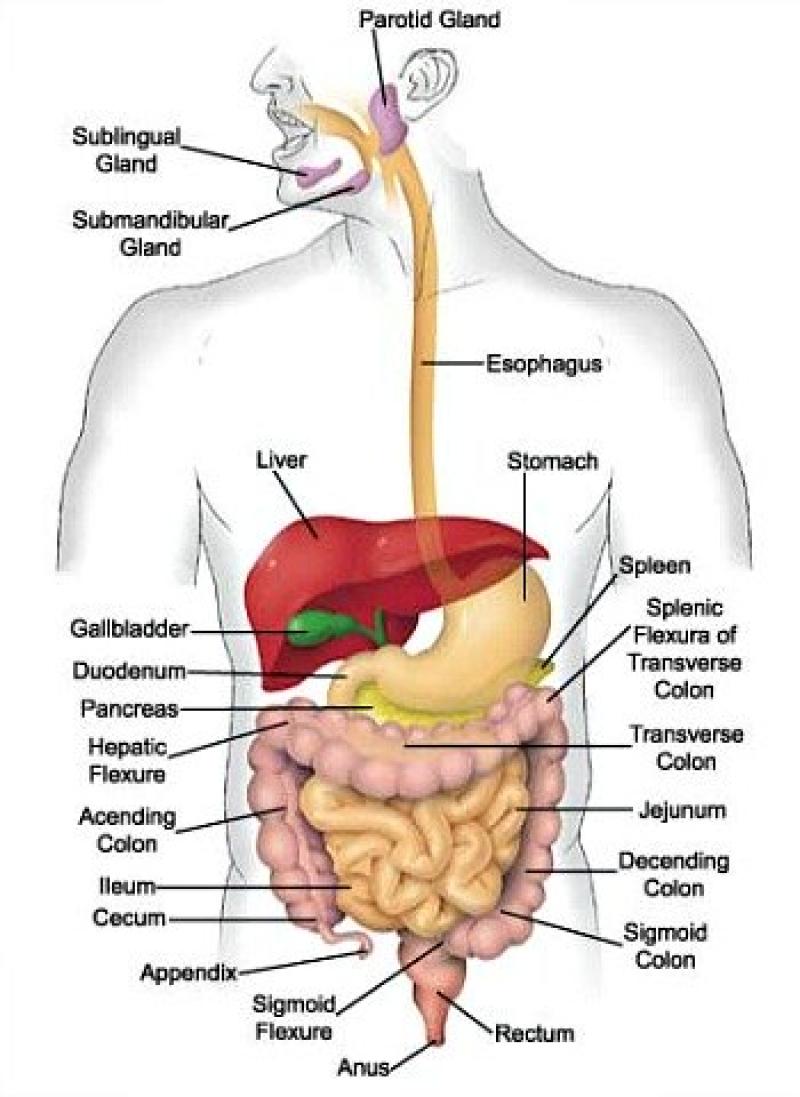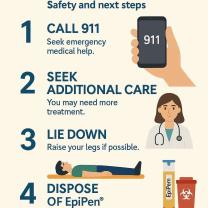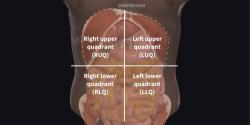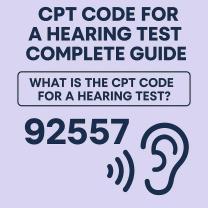What to know about right upper quadrant pain?
Right upper quadrant (RUQ) pain refers to discomfort or pain felt in the upper right side of the abdomen, just below the ribcage. This area contains several important organs, and RUQ pain can be caused by various underlying conditions. Here are some key things to know about RUQ pain:
Organs in the RUQ: The right upper quadrant of the abdomen contains several vital organs, including the liver, gallbladder, part of the pancreas, the right kidney, and the large and small intestines.
Common Causes of RUQ Pain:
Gallbladder Issues: Gallbladder problems, such as gallstones or inflammation (cholecystitis), are frequent causes of RUQ pain. The pain may be sharp and may radiate to the back or right shoulder.
Liver Conditions: Liver disorders, including hepatitis, fatty liver disease, or liver abscess, can cause RUQ pain. The pain is often described as a dull ache or fullness.
Pancreatitis: Inflammation of the pancreas can lead to RUQ pain, which may be severe and radiate to the back.
Kidney Stones: If a kidney stone is located in the right kidney or the right ureter, it can cause RUQ pain.
Infections: Infections of the right kidney or liver can lead to pain in the RUQ.
Digestive Issues: Conditions like gastritis, peptic ulcers, or gastroesophageal reflux disease (GERD) can sometimes cause discomfort in the RUQ.
Symptoms and Characteristics: The type of pain can vary, but RUQ pain is often described as a dull ache, a sharp or stabbing pain, or a feeling of fullness or discomfort. It may be constant or intermittent, and it can be associated with other symptoms like nausea, vomiting, fever, or changes in bowel movements.
Diagnostic Evaluation: If you experience persistent or severe RUQ pain, it's important to seek medical attention. Diagnostic tests, such as blood tests, imaging studies (ultrasound, CT scan), and sometimes endoscopy, may be needed to identify the underlying cause.
Treatment: The treatment for RUQ pain depends on the underlying cause. Treatment options may include medications, lifestyle modifications, dietary changes, surgery (e.g., for gallbladder removal in the case of gallstones), or interventions to address specific conditions like pancreatitis.
When to Seek Medical Help: You should seek immediate medical attention if you experience severe RUQ pain, especially if it is accompanied by symptoms like jaundice (yellowing of the skin or eyes), high fever, uncontrolled vomiting, or significant changes in bowel habits.
RUQ pain can result from a wide range of conditions, and the specific diagnosis and treatment plan will depend on the cause. It's essential to consult a healthcare provider for a proper evaluation and to determine the best course of action to address the underlying issue.
1. Understanding Right Upper Quadrant Pain
Right upper quadrant (RUQ) pain refers to discomfort or pain in the upper right abdomen. The RUQ contains several vital organs, including the liver, gallbladder, pancreas, and a portion of the small intestine. Pain in this area can be caused by a variety of factors, ranging from mild and temporary to severe and persistent.
Causes and Diagnosis of Right Upper Quadrant Pain
The causes of RUQ pain can be categorized into two main groups: biliary tract problems and liver-related issues.
Biliary Tract Problems:
Gallstones: Gallstones are hardened deposits that form in the gallbladder, a small organ that stores bile, a digestive fluid. Gallstones can cause pain, inflammation, and blockages in the biliary tract, leading to RUQ pain.
Cholecystitis: Inflammation of the gallbladder, known as cholecystitis, can cause RUQ pain, along with nausea, vomiting, and fever.
Liver-Related Issues:
Hepatitis: Hepatitis is an inflammation of the liver, which can be caused by viruses, alcohol abuse, or other factors. Hepatitis can cause RUQ pain, along with jaundice (yellowing of the skin and eyes), fatigue, and loss of appetite.
Liver cirrhosis: Liver cirrhosis is the scarring and hardening of the liver due to chronic liver damage. It can cause RUQ pain, along with swelling in the abdomen and legs, fatigue, and difficulty concentrating.
Diagnosis:
Diagnosing the cause of RUQ pain typically involves a combination of medical history review, physical examination, and diagnostic tests. Common tests include:
Blood tests: Blood tests can check for liver enzyme levels, bilirubin levels, and other markers of liver or gallbladder dysfunction.
Imaging tests: Imaging tests, such as ultrasound, CT scans, or MRIs, can visualize the liver, gallbladder, and other organs in the RUQ to detect abnormalities.
Treatment Options for Right Upper Quadrant Discomfort
Treatment for RUQ pain depends on the underlying cause. For biliary tract problems, treatment may involve:
Gallstone removal: Gallstones may be removed through minimally invasive procedures like endoscopic retrograde cholangiopancreatography (ERCP) or gallbladder removal surgery (cholecystectomy).
Medications: Medications may be prescribed to dissolve gallstones or relieve pain and inflammation.
For liver-related issues, treatment may involve:
Addressing the underlying cause: Treatment depends on the specific cause of liver inflammation or damage, such as antiviral medications for hepatitis or lifestyle modifications for liver cirrhosis.
Symptom management: Medications may be used to manage symptoms like pain, nausea, and fatigue.
4. Right Upper Quadrant Pain and Liver and Gallbladder Health
RUQ pain is often associated with liver and gallbladder health issues. The liver is responsible for many essential functions, including filtering blood, producing bile, and storing energy. The gallbladder stores and concentrates bile, which helps digest fats. When either of these organs is affected, it can lead to RUQ pain and other symptoms.
Living with and Managing Right Upper Quadrant Pain
Managing RUQ pain often involves addressing the underlying cause and adopting lifestyle changes. Here are some tips:
Follow your doctor's treatment plan: Adhering to your treatment plan is crucial for effective management of the underlying condition and relief of RUQ pain.
Maintain a healthy diet: Eating a balanced and nutritious diet can support liver and gallbladder health. Limit fatty foods, alcohol, and processed foods.
Maintain a healthy weight: Excess weight puts extra strain on the liver and gallbladder, potentially exacerbating pain.
Stay hydrated: Drinking plenty of water helps the liver function properly and may help prevent gallstones.
Avoid smoking: Smoking can damage the liver and increase the risk of gallbladder problems.
Manage stress: Chronic stress can worsen RUQ pain. Find healthy ways to manage stress, such as exercise, relaxation techniques, or spending time in nature.
If you experience RUQ pain, it's important to consult with a healthcare professional to determine the underlying cause and receive appropriate treatment. Early diagnosis and management can help prevent complications and improve your overall health.













